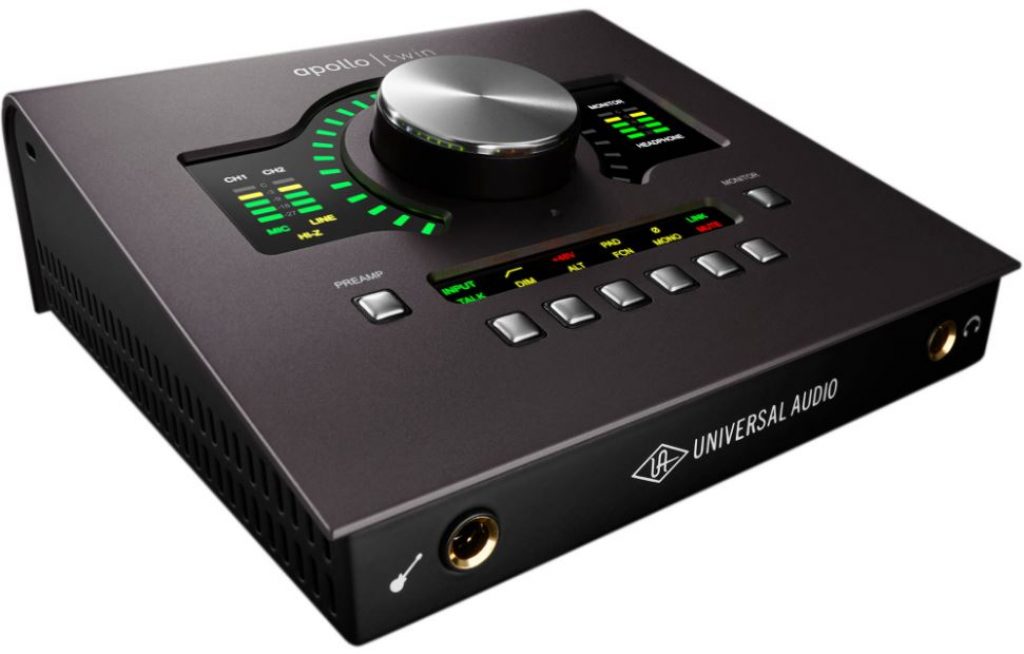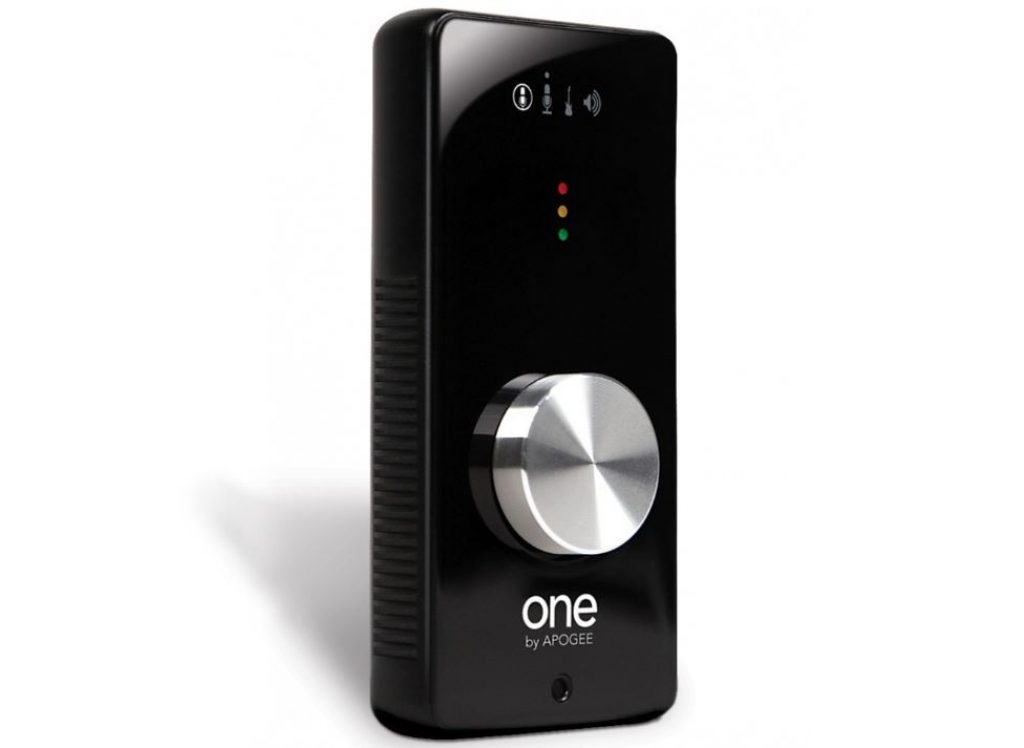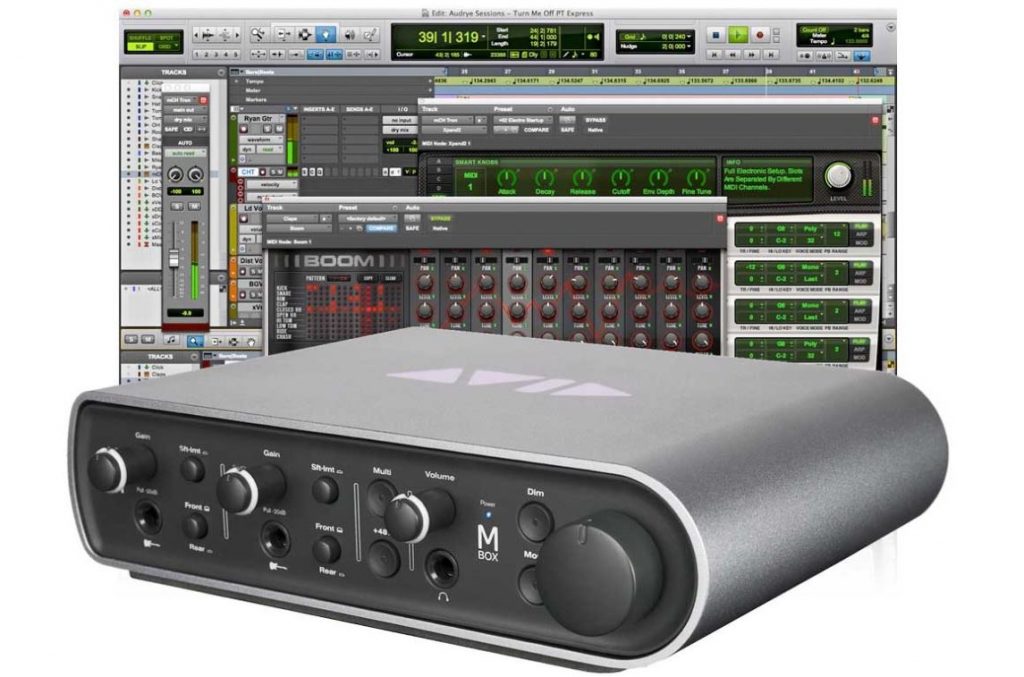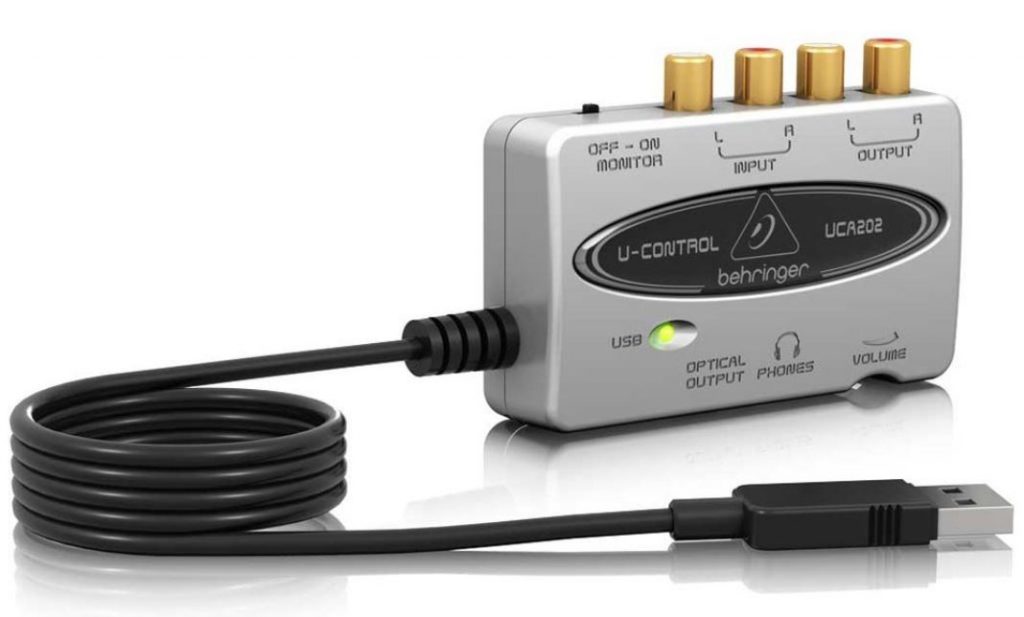
So you want to complete your studio with one of the Best Audio Interfaces? For us, it’s one of the most important parts of music and we see it as the star at the top of the Christmas tree. Without an audio interface, you simply can not record optimally. Your content essentially lacks half the power and potential without any of these in your studio. The best audio interfaces help us with sound quality, phantom power, and amplification, more general control of our equipment, the organization of all our inputs/outputs in one device and, finally, the annoying latency concept disappear. We now highlight our 10 best audio interfaces available on the market and give you some information to facilitate your shopping adventures.
What Is An Audio Interface?
An audio interface is a device that connects your various audio equipment to your computer (microphones, MIDI keyboards, studio control speakers, etc.). Some have even called them “external sound cards” because the components built into the computers cannot make the cut (not for nothing – they are usually too expensive or not big enough). In terms of possibilities (and it really depends on the model chosen), they can provide phantom power to amplify your microphones, connect any instrument or controller via MIDI, and use the XLR ports for the microphones. Audio interfaces convert analog information into digital signals for your production computer or music notebook to recognize and record your songs.
Top 10 Best Studio Monitor Speakers
How To Pick The Best Audio Interfaces?
When it comes to the best audio interfaces, it really depends on a few factors. We would like to give you a clear answer, but it is too dependent on many elements you have to take into account when shopping for the device. It depends on what you need:
- Budget – Most of them are relatively affordable, but you can still go higher for a number of powerful functions. We saw that the audio interfaces ranged in a price range from $30 to $2000. We have tried to grab a few for each price to give you options for your search.
- Connectivity – You can choose the most popular USB route, FireWire or even advanced Thunderbolt. The more you leave USB technology, the more money you will have to spend. However, the investment can be worth it if you have the money.
- I/O options – This is something to really take into account, not only for the moment but also for the future. Many musicians who record several instruments simultaneously, as with a group, require many inputs and outputs to operate all equipment. Of course, I’m a one-man group in my job, so I think it’s good with smaller inputs because we take everything separately. Do you need a pair of microphone inputs
- Ports – Try watching the acceleration around you and planning what you want to connect to your audio interface. If you plan to buy more products in the future, purchase an interface that can provide you with some additional connections for your future studio.
Focusrite Scarlett 2i2

- USB connectivity
- A/D resolution: 24-bit/96kHz
- Inputs: Two XLR/TRS combo
- Direct monitor control on the front panel (switch between headphones and speakers easily)
- Comes with Ableton Live Lite and Scarlett bundle (processors, effects)
In our opinion, this is one of the best audio interfaces available. This Focusrite interface is ideal for private and semi-professional studios (I have two friends who make full-time music using it). The Scarlet 2i2 offers us a high-quality preamplifier, very robust construction for stability and portability, as well as a large number of selections for inputs and outputs. The name “2i2” actually means that it has two inputs and two outputs, as well as two built-in preamplifiers (the other models you’ll see have similar names related to connection options).
There is a lot of talk about the quality of the amp, compared to the mechanisms of many capacitors and ribbon microphones and more expensive interfaces. Another big advantage is that it comes with Ableton Live Lite, a digital audio workstation very popular among music leaders. This is especially fine if you are looking for a software to start with or if you just want to switch to one of the most popular software, Ableton comes with this package and makes it an indispensable tool. In the end, it’s just a simple interface to a very low cost – one of the most popular choices.
Universal Audio Apollo Twin

- 24-bit/192 kHz audio conversion
- Headphone and guitar input on the front
- A dedicated master volume knob
- Comes with a plug-in bundle (analog classics)
- Two mic/line pre-amps
- Thunderbolt connection
Then we have a mac interface and this thing is extremely powerful. This is a 2 x 6 flash connection and the audio conversion is quite revealing at 24 bits/192 kHz for some of the brightest, zero latency sounds that are now possible. It has a real-time UAD processing, which makes real tracking with compressors, equalizers, and amplifiers for different instruments. It is only compatible with Mac, but it is one of the best. Universal Audio brings us quality versions that will last a long time. It is, therefore, an investment. You need a light cable for this, but it’s worth it if you use the full 9: Universal Audio Apollo Twin will not let you down if you have the money. This is one of the best audio interfaces, quite famous and has been around for quite some time.
Mackie Onyx Blackjack

- Two Onyx mic pre-amps
- Amps go up to 60 dB
- High-headroom design
- USB powered
- Separate studio monitor/headphone outputs
Mackie equipment is more suited to DJs, but this audio interface is very solid for the price, giving us two high quality and very powerful Onyx mic preamps. Give us some protection against distortions due to the design with a large free height. Very good recording without latency, but what strikes us is the gain control of the amplifier: excellent for electric guitars and dynamic microphones. You can read each line (1 and 2) at 60 dB, set maximum phantom power on the monitor or phones, and have more controls in front. Standard inputs and outputs with two XLRs and TSRs. One step ahead of many audio interfaces thanks to the high-quality amplifiers. One of the best audio interfaces in the lower price range in our opinion. We recommend Mackie Onyx Blackjack for those who need a significant boost for an affordable and one of the best audio interfaces right now.
M-Audio M-Track Plus

- 24-bit / 48 kHz digital audio processor
- Very little latency when monitoring
- Solid aluminum build
- 2 XLR inputs, 2 balanced 1/4″, MIDI in and out
- Selectable phantom power
Here is another of the best audio interfaces for the money. This is a very robust model in terms of overall structure and supply of inputs and outputs required as M-Audio equipment is generally available. It is powered via USB and offers fantastic phantom power for microphones and guitars, has insert connections on each channel and finally comes with Avid Pro Tools Express and Ignite software for creating AIR.
If you are looking for a good software combo, it’s great. Otherwise, it’s still a solid audio interface, because it offers us the essentials: 2 inputs/outputs XLR, 2 TSR, and MIDI … what do you need? Unless you use and record multiple instruments at the same time, everything else is not really necessary. M-Audio M-Track Plus is a solid audio interface for people who only want a few inputs and outputs and have clear audio quality. It is reasonably affordable and contradicts the Scarlett model we previously recommended in terms of price.
PreSonus AudioBox

- Rugged steel build
- Combo XLR mic/balanced 1/4″ input
- 48 volts of phantom power
- 24-bit resolution and 44.1, 48, 88.2, and 96 kHz sampling rate
- MIDI in/out
- USB 2.0 port
Another 2 x 2 to see here, and this is a simpler and more economical audio interface than many others. PreSonus equipment has a very positive reputation in the world of equipment and the AudioBox is a favorite interface of many. You get two preamplifiers of very high quality, a pretty little steel construction and two MIDI inputs/outputs in the front. At the rear, your TSR inputs, a USB port for power and connectivity, as well as a left and right stereo input.
Finally, a headphone connection (at the back), although I like to use it in the front, well. Because it is more economical, it is not recommended for people with instruments requiring a gain greater than about 35 decibels or headphones over 100 impedances. Keep this in mind because the power is excellent for a lower price audio interface, but it is also not saturated. This is one of the best audio interfaces at a low budget that requires the standard functionality of an interface. Although it does not have a sleek digital conversion (like the Apollo Twin), you get what you pay for.
Apogee ONE

- A/D and D/A conversion: 44.1/48 kHz 24-bit
- Single input channel
- Internal condenser microphone
- XLR microphone pre-amp
Apogee electronics brings us one of the best audio interfaces for Mac. It is rather simplistic in terms of connectivity, but the reason why it is so expensive is that of the amplifier. It rises to 63 dB, which is big enough for its size. 48-volt phantom power is another benefit, but it also has a built-in condenser microphone if you plan to use it for it. You can only mount and use it as a microphone if you have an audio interface at hand.
It does not have a MIDI input or output or even XLR ports, but it gives us a 1/8 “for headphones. Most people use a conversion cable that can be connected to an external microphone, a keyboard or MIDI controller, etc. Do not let the small size of the Apogee ONE make you think it’s powerful, it increases the quality of your music like no other (if you’re on Mac). , it’s one of the best audio interfaces on the market.
Avid MBox+ Pro

- Two XLR mic/line combo inputs
- Two 1/4″ DI inputs
- Stereo S/P/DIF digital in and out
- MIDI in and out (1×1)
- Monitor control
- Dedicated volume knob
If you want to use Pro Tools and one of the industry’s toughest standards, we encourage you to do so. The Avid bundle is a little more expensive than the affordable audio interfaces we’ve mentioned so far, but you’ll get your money’s worth if you want to invest in DAW software that many people call the best – Pro Tools software (Express is not the full version, remember). The Mbox is a very solid interface, not only because it is Pro Tools’s buddy – it comes with 4 4-channel inputs/outputs (two XLR microphone/line combos, two 1/4 “inputs, and outputs, as well as a headphone output and MIDI inputs/outputs). You have phantom power from the standard 48 volt voltage for your condenser microphone, a nice soft clip limiter and, if you play the guitar, a built-in tuner with built-in effects A good package if you’re looking for a big effort The Mbox Avid is one of the best audio interfaces for semi-professional and even professional studios.
Lexicon Alpha

- 44.1kHz to 48kHz sample rates
- Record up to two tracks at once
- Inputs: One (1) XLR, Two (2) TRS, One (1) Hi-Z
- Two TRS & RCA outs
- USB powered
- Headphone output on the back
This interface of Lexicon Pro has many positive reviews and for good reason. At a very low selling price, it has an XLR microphone, two TRSs, and a Hi-Z input. The only thing we miss here is the lack of phantom power and MIDI input and output, but if you do not need it, the price is a bargain, especially for sound quality under $100. What is emphasized here is the low latency, so you do not experience any delay in recording, virtually the standard of an interface; if that were not possible, we would not even mention it here.
It’s a solid audio interface for recording instruments that do not require phantom power, as well as connecting studio monitors to your platform. The Lexicon Alpha is one of the best audio interfaces if you know how to connect cables to other equipment while recording, for example between a guitar and a keyboard. There is also very good software included with Cubase LE 4 and their reverb plug-in Lexicon Pantheon VST.
Native Instruments Komplete Audio 6

- 24-bit/96 kHz processor
- MIDI in and out
- 2 balanced mic/line/instrument XLR
- 2 balanced line 1/4″ TRS
- 4 balanced analog outputs 1/4″ TRS
- Two mic inputs/ headphone output
- 48 volts of phantom power
We are big fans of Native Instruments hardware and software and it is a competitor of the previously mentioned Avid bundle. They were a good choice in our best guide to VST plug-ins. The Komplete Audio package is very powerful here, not only because of the solid construction that will contribute to a long life, but also because of the software it contains – Cubase LE 6 (a solid software, DAW), Traktor LE 2 and Komplete Elements, which allows you to get rid of 1k VST effects.
As for connectivity, you have a number of good plugs – 2 balanced XLRs, 2 1/4 “balanced TRS, 4 balanced outputs, 1 MIDI input/output, and USB powered for hassle-free connections. With a special volume knob for convenience, it’s a great package to see if you have the dough, especially if you also want to add instruments and effects to your arsenal. The sound quality is very clear and reliable in terms Native Instruments Komplete Audio 6 Latency Reduction is not much cheaper than the Avid kit, but you get Cubase instead of Pro Tools.
Behringer UCA202

- High-resolution 48 kHz conversion
- No drivers necessary — USB powered and connectivity
- Stereo headphone output
Behringer audio equipment gives us the definition of an economical audio interface. This is immediately clear and is powered via USB without external power supply, ideal for portability. The resolution reaches 48 kHz, so in terms of conversion, it is solid for the price. There is simply no XLR or TRS input here, so it’s hard to plug in a microphone – standard RCA inputs (which can be converted with the right cables) while we get a headphone jack and control over it. volume.
It also comes with a free software package that is worth a look. We recommend getting it if you are traveling and need a simple digital converter. The Behringer UCA202 is one of the best audio interfaces for those who want only the essentials at a very affordable price. We consider it the best economic and economical audio interface on the market.
Final Words
There has never been a better time to buy a great-sounding, flexible Best Audio Interfaces for your home studio. With the power and excellent sound quality offered in these units, it comes down to how many inputs/outputs and which functions you need. Above, we have mentioned some of the best audio interfaces offered today, shared by whether you need USB or Thunderbolt. Let us know your thoughts on this list by sharing them with us in the comments box below.
